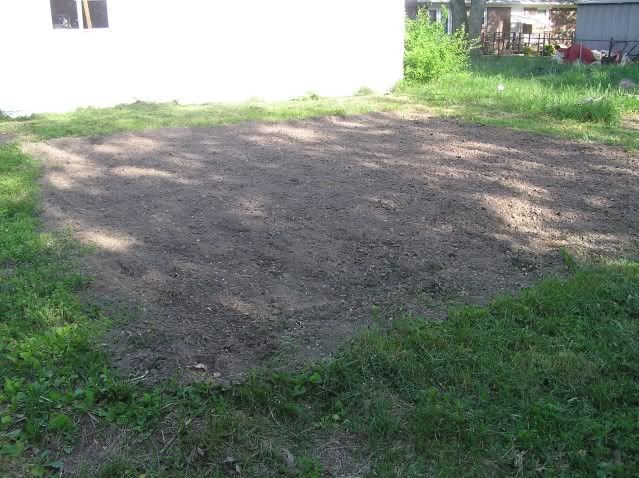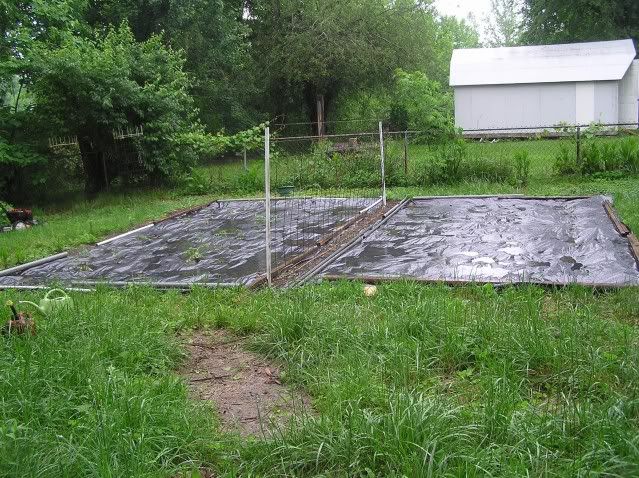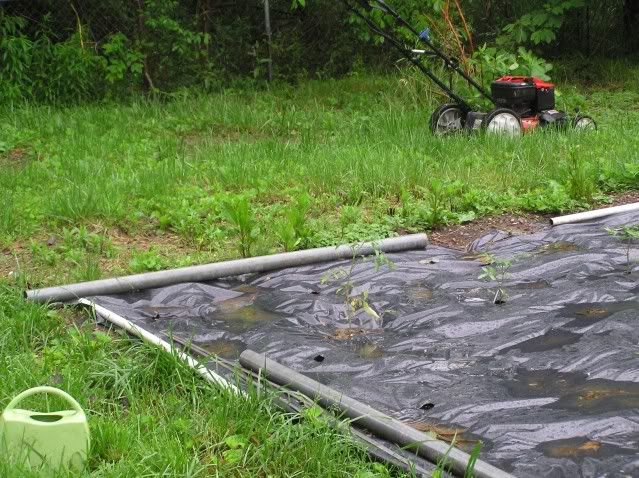(midnight – promoted by Nightprowlkitty)
Vegetarianism is a lifestyle that many people adopt for their food choices. Let me post this disclaimer: I am not personally a vegetarian, but I have no quarrel with those who are. The only concern that I have is that some folks are not versed properly in how to get a complete diet as vegetarians, and this essay is directed toward them.
It is quite possible to have an extremely healthy diet as a vegetarian, but it takes some effort and knowledge. There are a couple of nutritional “holes” in a vegetarian diet that need to be filled by proper choice of plant products, and this is not always evident.
First, allow me to get off of the horrible Gulf oil spill for a while. I have some comments at the end of the post about it. It does seem to be much worse than we were led to believe, but there are some breaking news items that I need to consider before expressing an opinion. There are several posts about it here, so I do not think that I can add anything to the discussion at present.
There are all shades of vegetarians. There are many classification schemes, and it is not my goal to try to label people based on why they decide not to eat meat. However, there is a classification system that is important on a nutritional basis, and should be considered. This is my simplified rendition of a longer list, from what I consider least vegetarian to most vegetarian.
There are the pescetarians who normally avoid meat and poultry, but use fish and shellfish as one of their primary protein sources. They also usually allow milk and egg products. These are not proper vegetarians, since they do eat the flesh of animals, just not birds or mammals. Some will eat amphibians and reptiles, some not.
The only real health concern that faces pescetarians is the pollutants that are commonly found in fish. Because of extensive coal burning, especially for electricity generation, an enormous amount of mercury is injected into the atmosphere. Since there is no scrubber technology technically feasible for mercury, this will remain a problem until coal burning is eliminated. The top predatory fish are generally the worst for mercury, as they eat lots of lesser predatory, and the mercury concentrates. Pregnant women should be especially cautions. FDA recommends that pregnant women, small children, and women planning on families not to eat tilefish, swordfish, shark, or king mackerel at all, and limit to twelve ounces total of “low” mercury seafood like catfish, tilapia, salmon, shrimp, and pollack.
Another pollutant in fish are the PCBs (polychlorinated biphenyls) that were extensively used in industry up to the 1980s. These are carcinogenic and extremely stable in the environment, so do not degrade very fast. In fact, once in the water they tend to fall to the bottom and are eventually covered by sediment, but remain. There is a high enough concentration of PCBs in the Great Lakes that consumption of fish from them is restricted, and some unpublished results show alarming concentrations in many wild caught marine fish. PCBs are estrogen mimics, and there is evidence that it tends to feminize embryos, and that is passed to infants by breastfeeding.
Thus, I would recommend that most folks limit their consumption of fish to a reasonable level, with the specific mercury warnings from FDA for mercury being followed. By the way, many states have their own local recommendations for consumption due to mercury (mostly) and PCB levels.
The next less severe school of vegetarianism includes the lacto-ovo vegetarians. As the name indicates, they eat mild and egg products, but no flesh of any type. Dietary deficiencies are fairly rare for this class, and good protein is derived from those products. However, it is not a strictly vegetarian diet, but closer than the first one. There are a few quirks, however. There are several products that a strict lacto-ovo vegetarian will avoid, such as gelatin, which is derived from the rendering of animal tissues and bones. Good-bye, Jello! Cheese was sort of dicey for a long time, since it was traditionally made with rennet from a suckling calf’s stomach, but most modern mass produced cheese is curdled by rennet produced by bacteria through recombinant genetics, so the calves are no longer used except in some handcrafted, small volume outfits.
Next come the ovo vegetarians and the lacto vegetarians. As the names indicate, ovo vegetarians will eat egg products but not milk products, and the lacto vegetarians will eat milk products but not egg ones.
There are slightly greater deficiency concerns in these two groups, but getting a good, balanced diet is not that hard to do. One caution is that a diet very high in eggs can cause cause a deficiency of the B-complex vitamin biotin, because the protein avidin binds to biotin. It seems that avidin is deactivated when eggs are cooked, so that should not be a big problem. Another protein in eggs, ovotransferrin, binds iron, but that binding is also greatly reduced or eliminated by cooking. The salient point is that large amounts of raw eggs are a bad idea because of those two items, not to mention the risk of infection by Salmonella. The significance of the cholesterol content of egg yolks has been greatly exaggerated. They do contain a lot, but the latest data indicate that little, if any, is absorbed by eating eggs.
The real source of cholesterol are triglycerides, also known as fats. The “bad” ones are the saturated fats, and milk has lots of saturated fats. Skin milk has little to none, but even 2% milk has a lot (actually, 2% milk has more than half the fat of “regular” milk, at around 3.25%). Thus cheese made from whole milk is replete with saturated fat, as is butter. Whole milk products are very caloric due to the fat content, so go easy on them. For example, the nutrition statement on some part-skim mozzarella cheese that I have says that 1 ounce contains 7 g protein and 5 g fat (3.5 g saturated) for 80 calories, 50 from fat. My full fat Swiss says that it has 8 g protein and 9 g fat (5 g saturated) for 110 calories, 80 from fat.
As an interesting aside, most people in the United States that cleave with the types of vegetarianism mentioned above will eat honey. This is in contrast with the last type of vegetarianism that we shall discuss.
Vegans eat only plant materials. Some vegans go further and will eat only fruits, nuts, berries, and other parts of plants that can be harvested without being fatal to the plant, but most vegans will eat leaves, stems, and roots as well. This is the most challenging diet from a nutritional standpoint, and vegans need to know their stuff to avoid serious dietary deficiencies. One of the more serious deficiencies is lack of complete protein. A complete protein contains all eight of the essential amino acids (I will not bother to name them) that the human organism can not synthesize from other materials. For example, eggs contain all of the essential amino acids, and so does milk. It is fortunate for us that a cow’s needs are similar to ours.
Purely vegetable sources of protein in many cases do not contain all eight of the essential amino acids. For example, corn is low in the essential amino acid tryptophan, and a diet with corn and the sole protein source soon causes a deficiency of this nutrient. However, beans like pinto beans contain lots of it, but are low in some others that corn (and other grains) have. Thus, it is important to eat a wide variety of vegetables to get a complete protein. It is nonsense that they have to be eaten at the same sitting, or even the same day. The important thing is to have varied sources for proteins. There are a number of vegan books that go into some detail. The traditional Latino combination of beans, corn, and rice (other grains were used until the introduction of rice) is an outstanding example of a culture developing a complete protein recipe without scientific knowledge of why those work so well together.
Another potentially serious deficiency is that of Vitamin B-12. There is no purely vegetable material that provides enough of this material for humans. As a matter of fact, as far as is known, no plant or animal produces this essential vitamin. Bacteria are about the only sources for it, and we actually produce it in our large intestine. Unfortunately for us, the place where it is absorbed is in the small intestine, so we can not benefit from it. Animals like cattle have bacteria in their rumens that produce it, and then the animals absorb it in their small intestine. Predators eat their prey intestines and all, so get theirs from the actual gut contents. One of the richest food sources is liver, which is of course off limits from vegans.
The only way that vegans can get enough B-12 is to eat fortified foods or supplements. B-12 is easy to produce and is cheap, being made through a bacterial fermentation process (no animals involved), so it is a vegan-friendly thing. Claims by some vegan groups that the seaweed laver or other vegetable sources have been disproved. However, some plant materials contain a substance that has no vitamin activity that shows up as B-12 blood tests, so one can be deficient and still be undiagnosed.
There are a few other nutrients that are apt to be lacking from a typical vegan diet, but they are not as serious as the two just mentioned. Omega 3 fatty acids, particularly long chain ones (the most beneficial) are seriously lacking in vegetable products, but some vegetable oils contain shorter chain ones that still are of benefit. Flax oil is particularly rich in the short chain ones. Persian (English) walnuts are a fair source, too, and have excellent protein.
Calcium can be lacking in a vegan diet as well, but lots of leafy greens can help. However, spinach (alone with kale and beet greens) is an extremely poor choice for calcium because it is bound in the highly insoluble calcium oxalate, and is so not available. Supplements can be taken, but for a strict vegan this might not be acceptable since most calcium supplements are derived from the shells of shellfish or from natural limestone deposits also derived from tiny animals in prehistoric times. Tofu has quite a little calcium, as well as good protein.
Iron is usually not too much of a problem, but plant derived iron is not as easily absorbed and animal derived iron because of differences in the molecules containing the iron. Thus, more has to be eaten. Cooking in cast iron is another way to get more, and supplements are also a choice. Iron supplements are not derived from animal sources.
There are some foods that at first glance would seem to be fine for vegans, but that is not always the case. For example, some wines and beers are fined (clarified) by using things like egg whites, isinglass (the swim bladder of sturgeon), or similar materials. The labeling regulations do not require the listing of those materials since the bulk of them are removed from the product, but as a chemist I can tell you that some animal-derived molecules remain. Another example is white sugar, much of which is still filtered through boneblack, the charred bones of cattle and sheep. Whilst this material is slowing being replaced by plant derived activated carbon, there are still many boneblack sugar plants. Labels are not required to disclose what decolorizing process is used. Brown sugar is usually white sugar that has had molasses sprayed on it, whilst unrefined sugar has not been sent through any kind of carbon.
Looking around my kitchen, I picked out a generic steak sauce and read that it contains molasses, a derivative from the sugar refining industry, so it may have been in contact with boneblack. Incidentally, molasses is an excellent source of iron for vegans, but you need to know your source. The most well-known national brand of Worcestershire sauce contains anchovies as one of its flavorings. Interestingly, I heard a vegan holiday cooking show that used that very product as a key seasoning for the tofu “turkey”. I also have honey, usually not accepted in a vegan diet, and a number of condiments contain honey as a minor ingredient.
Not much bread is made with lard these days, but some pastries are. However, beware of trans unsaturated fats (also called trans fats). While not a concern from a vegan point of view in the strict sense, it is in the spirit of the philosophy from a health standpoint, trans fats elevate triglycerides and cholesterol and should be avoided whenever possible. You have to read the label, not just the nutritional statement, because the nutritional statement is only required to list it if a “serving” contains less than half a gram of it. If the label says “partially hydrogenated vegetable oil”, then it has trans fat in it.
I do not have a great amount of experience cooking vegetarian dishes, other than just the common vegetable and fruit sides to accompany a non-vegetarian meal. I also never recommend recipes that I have not tried or developed myself, because it would be dishonest of me to say, “yeah, this is great!” if I did not know so from personal experience. Therefore I request that you provide in the comments one of your favorites. One reader has a daughter who is considering becoming a vegetarian, and I am sure that he would appreciate good recipes (he is quite the cook). I would prefer vegan ones (although she is not considering that at present) because the ingredient list is so restricted, but any will be appreciated.
As I mentioned a couple of weeks ago in What’s for Dinner?, I have been trying to get my garden in for several weeks. I finally got it done, and here are a couple of pictures.

Here it is just after I tilled it. We are looking west to east. It was late in the day, so not the best exposure. It grew a little over the years, and is now closer to 20 x 20 feet rather than 16 x 16.

Here it is after the plastic went down, the support for the purple peas put in the center, and the tomato and pepper plants planted. The peppers are hard to see on the very right edge, whilst the tomatoes are on the left. The running vines are on the extreme left (they have not come up yet) and the squashes at the very front (they have not come up either). This view is south to north.

Look at the poke plants just past the holddown pipe. Sadly, they will have to be covered with more black plastic when the melons start to run.
Well, you have done it again! You have wasted many einsteins of photons reading this stone soup of an essay. And even though Newton Gingrich stops calling the president a socialist when he reads me say it, I always learn much more that I could possibly hope to teach writing this series. Thus, please keep comments, recs, questions, corrections (I very much welcome those) and other items coming. I shall check late comments here tomorrow at Review Time, around 8:00 PM Eastern.
Warmest regards,
Doc
Crossposted at Dailykos.com

6 comments
Skip to comment form
Author
for good eats?
Warmest regards,
Doc
Your garden looks fabulous! What is the purpose of the plastic?
I believe seeds and nuts are fabulous protein providers and they are able to be eaten by vegetarians as well as vegans. I peanut butter maker is a fabulous tool because it can take these seeds and nuts and make a great spread that can be combined with jam, bananas, spread on crackers.
Author
my friend! I hope that most folks find this an accurate essay. I worked a long time on this one, because a friend asked me to do so.
Warmest regards,
Doc